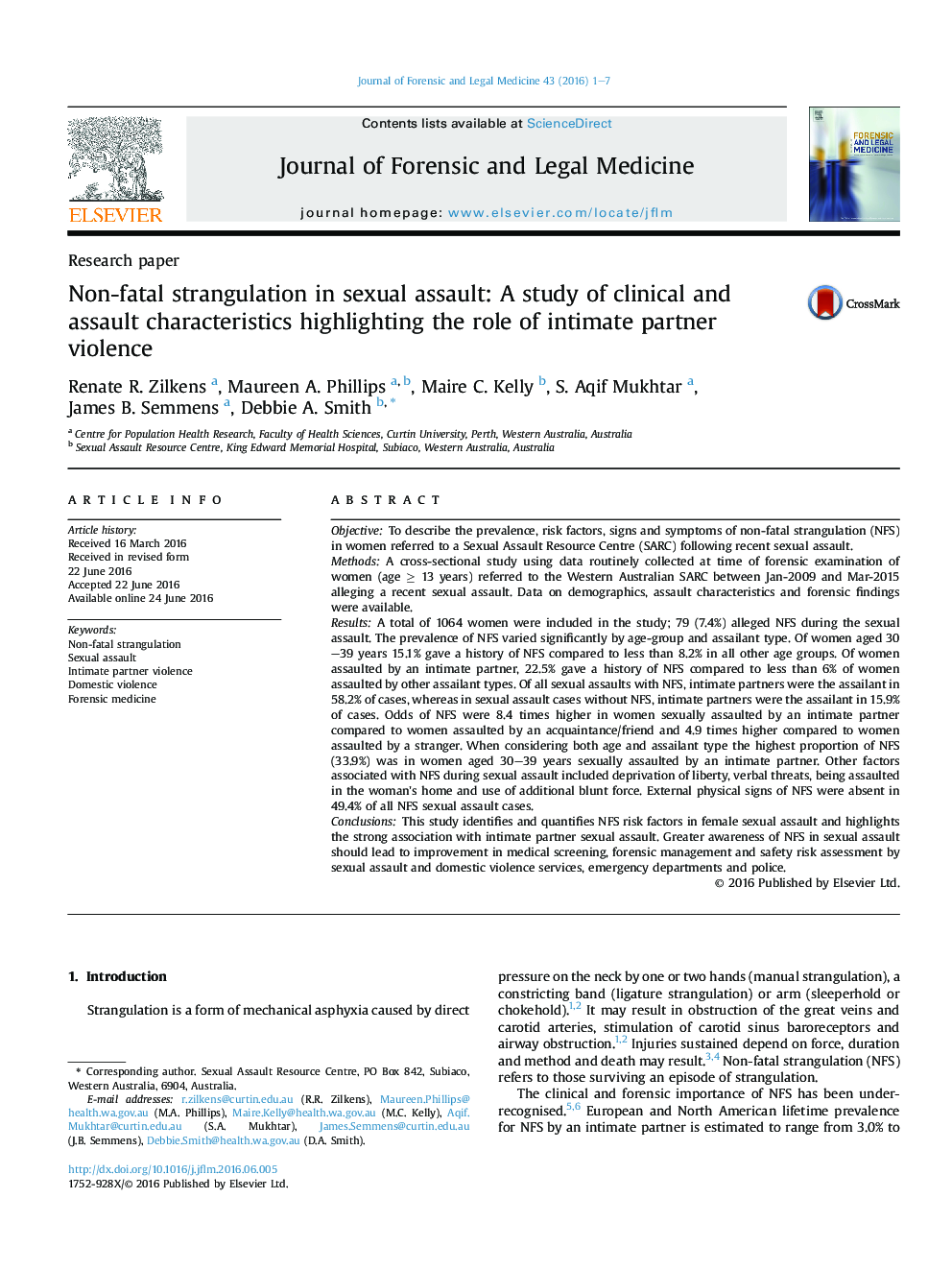| کد مقاله | کد نشریه | سال انتشار | مقاله انگلیسی | نسخه تمام متن |
|---|---|---|---|---|
| 101586 | 161283 | 2016 | 7 صفحه PDF | دانلود رایگان |
• 7.4% of all female sexual assault cases involved non-fatal strangulation (NFS).
• 58% of non-fatal strangulation sexual assault cases involved intimate partners.
• 23% of sexual assaults by an intimate partner involved NFS.
• NFS was most frequent in 30–39 year olds sexually assaulted by an intimate partner.
• External physical signs of NFS were absent in 49% who gave a history of NFS.
ObjectiveTo describe the prevalence, risk factors, signs and symptoms of non-fatal strangulation (NFS) in women referred to a Sexual Assault Resource Centre (SARC) following recent sexual assault.MethodsA cross-sectional study using data routinely collected at time of forensic examination of women (age ≥ 13 years) referred to the Western Australian SARC between Jan-2009 and Mar-2015 alleging a recent sexual assault. Data on demographics, assault characteristics and forensic findings were available.ResultsA total of 1064 women were included in the study; 79 (7.4%) alleged NFS during the sexual assault. The prevalence of NFS varied significantly by age-group and assailant type. Of women aged 30–39 years 15.1% gave a history of NFS compared to less than 8.2% in all other age groups. Of women assaulted by an intimate partner, 22.5% gave a history of NFS compared to less than 6% of women assaulted by other assailant types. Of all sexual assaults with NFS, intimate partners were the assailant in 58.2% of cases, whereas in sexual assault cases without NFS, intimate partners were the assailant in 15.9% of cases. Odds of NFS were 8.4 times higher in women sexually assaulted by an intimate partner compared to women assaulted by an acquaintance/friend and 4.9 times higher compared to women assaulted by a stranger. When considering both age and assailant type the highest proportion of NFS (33.9%) was in women aged 30–39 years sexually assaulted by an intimate partner. Other factors associated with NFS during sexual assault included deprivation of liberty, verbal threats, being assaulted in the woman's home and use of additional blunt force. External physical signs of NFS were absent in 49.4% of all NFS sexual assault cases.ConclusionsThis study identifies and quantifies NFS risk factors in female sexual assault and highlights the strong association with intimate partner sexual assault. Greater awareness of NFS in sexual assault should lead to improvement in medical screening, forensic management and safety risk assessment by sexual assault and domestic violence services, emergency departments and police.
Journal: Journal of Forensic and Legal Medicine - Volume 43, October 2016, Pages 1–7
